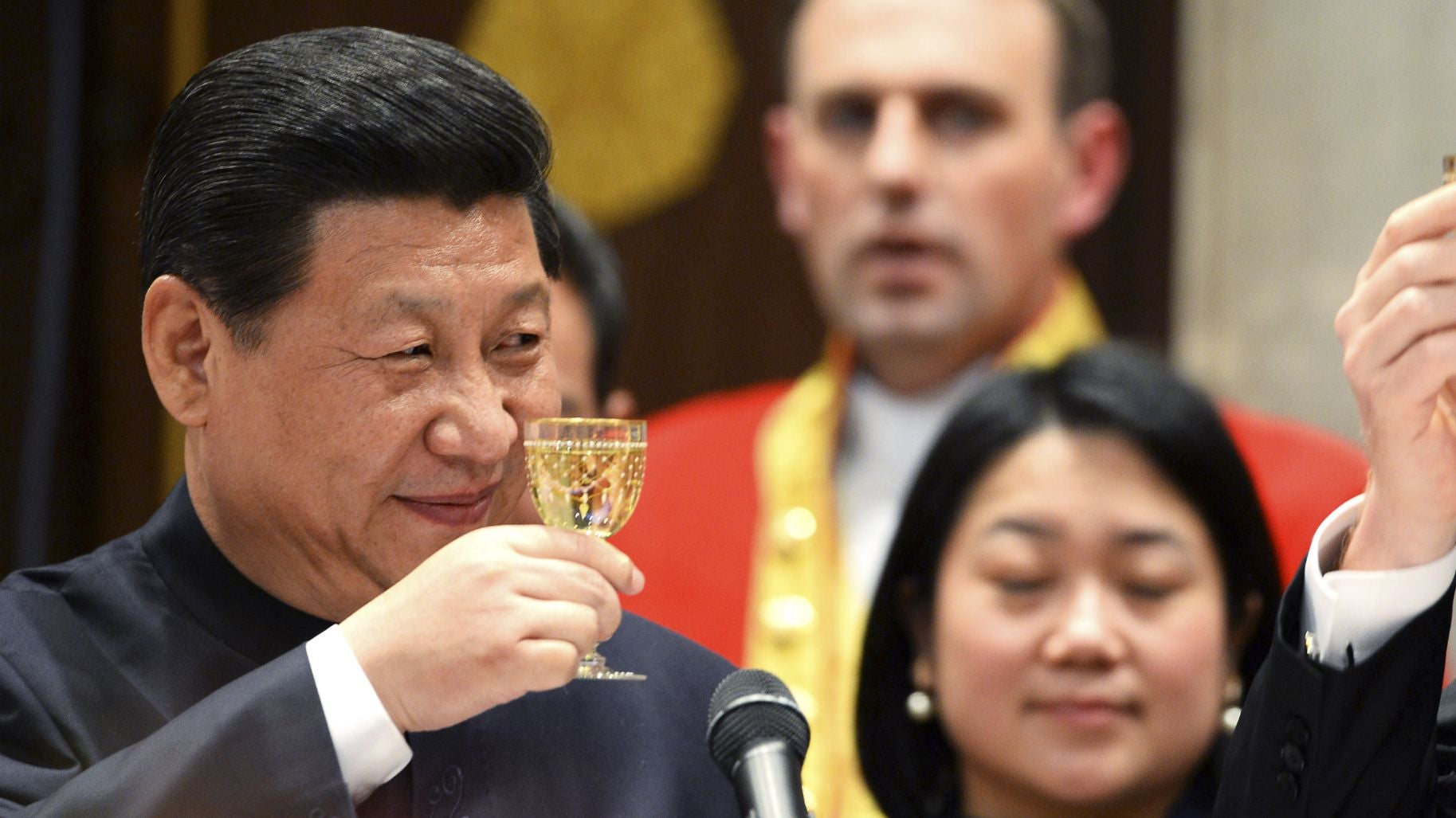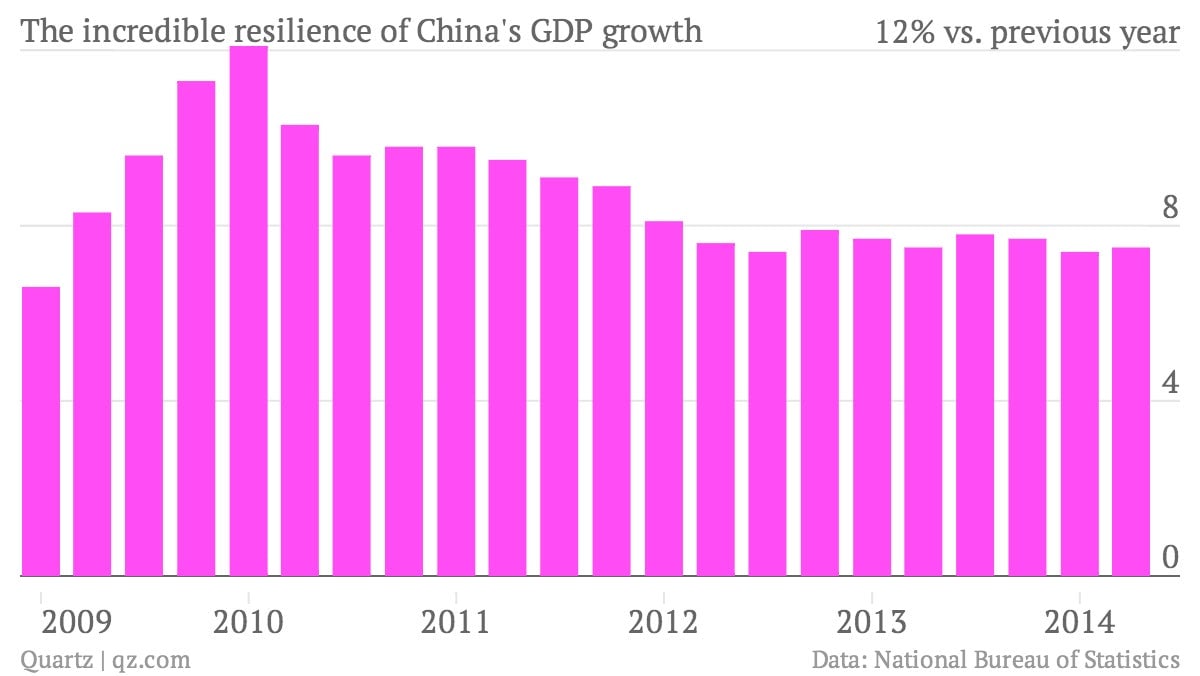China knows it has a problem, but it just can’t kick the investment habit
It seems that China has pulled it off again. Just when the naysayers were dismissing its economic growth model and expecting the pace of growth to drop to something close to 7%, the government pumped in a ton of investment and the Chinese economy expanded 7.5% in Q2, compared with the same quarter in 2013.


It seems that China has pulled it off again. Just when the naysayers were dismissing its economic growth model and expecting the pace of growth to drop to something close to 7%, the government pumped in a ton of investment and the Chinese economy expanded 7.5% in Q2, compared with the same quarter in 2013.

That’s not exactly surprising. In London a few weeks ago, premier Li Keqiang vowed that a sharp drop will growth “will not happen,” a theme the country’s finance minister reprised last week (paywall).
And, clearly, it didn’t. So does this mean China’s economy is finally growing in a sustainable way? Not by a long shot.
To boost growth, the government used a hodge-podge of policies that spurred infrastructure construction and encouraged banks to lend, as we’ve noted.
Even Li and president Xi Jinping know this is not the way to go; they said as much when they pledged sweeping financial reforms in the big Communist Party meeting in 2013. Their commitments to let the market, and not the Party, determine where capital should flow signal that they’re very aware that the biggest problem facing China right now is the government’s addiction to lending. Its moves to juice investment—and therefore growth—is tempting either a debt crisis or a Japanese-style “lost decade” or two.
The superficially triumphant return to 7.5% growth this quarter actually means China’s leaders are unable to kick their addiction. Just yesterday, a central bank official said Chinese banks will lend 9.5 trillion yuan ($1.5 trillion) this year—the biggest credit surge since the 2009 financial crisis.
The tricky thing with chronically puffing up your GDP data is that it makes it really hard to tell what’s really happening in the economy. (Goodhart’s law, named for a UK banker, states: “When a measure becomes a target, it ceases to be a good measure.”) With good reason, the government has been charily watching the housing market, prodding banks to lend more every time new data shows an ugly drop in sales.
But meanwhile, the “real economy”—meaning companies that don’t enjoy government support—is showing sings of weakness at “perhaps an unprecedented degree, in both capital expenditure and loan demand,” concluded Leland Miller and Craig Charney (paywall), the heads of independent research firm China Beige Book.
Their research shows that in Q2, loan demand dropped to the lowest level measured since CBB started its survey in Q1 2012—which seems weird given that lending has actually exceeded expectations in the last few months.
But CBB research suggests that private companies no longer want loans, which is a big reason why interest rates on the shadow market—credit issued off bank balance sheets—have fallen.
So who’s taking out all those new loans that have spiked unexpectedly of late? Well-connected state companies. Since they’re effectively backed by the government, banks deem them as safe credit risks. Clearly, enough of that lending is being invested to revive China’s GDP growth (though particularly with infrastructure projects, it’s not clear that those investments will yield much return). But other companies need the money because they have more debt than they have revenue.
Perhaps the most worrisome thing that CBB data showed, though, is a drop in consumer retail spending in Q2. And that’s exactly the opposite of what China needs to grow its economy sustainably.